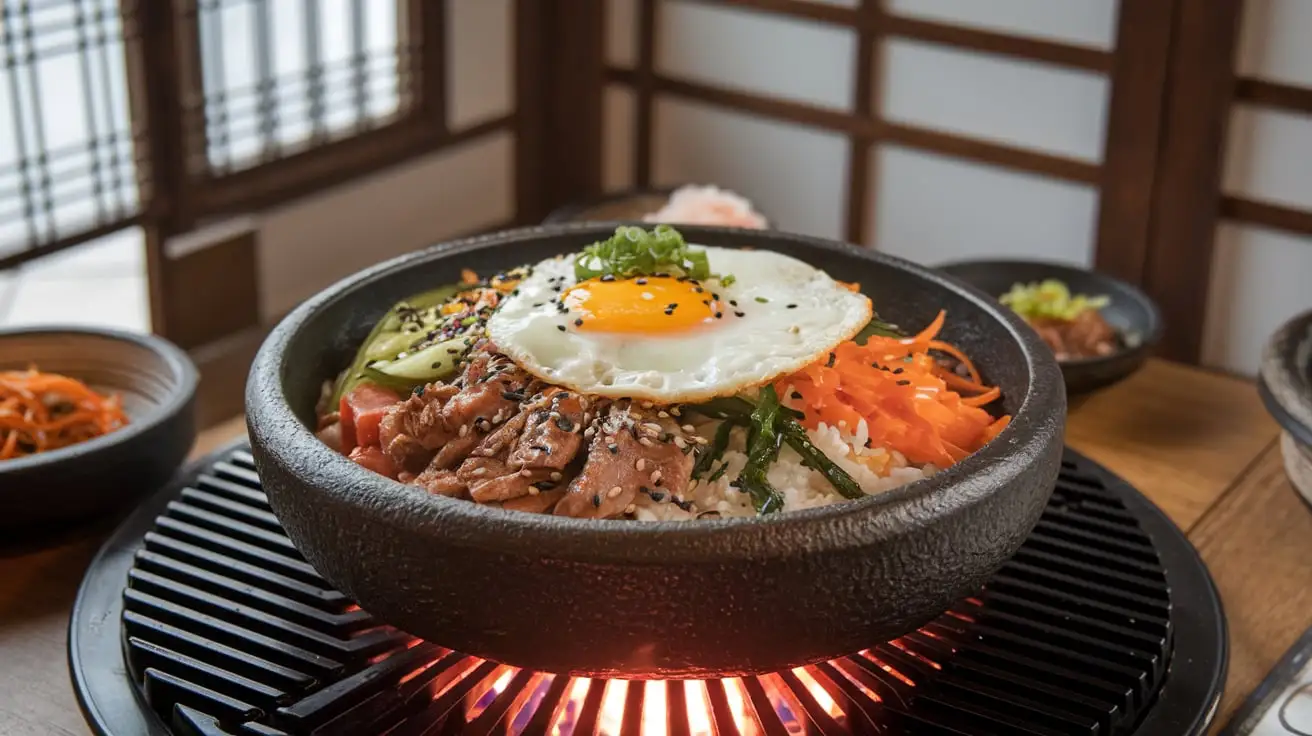Have you ever wondered, What is the national dish of Korea? The answer is kimchi, a Have you ever wondered, What is the national dish of Korea? The answer is kimchi, a vibrant and tangy fermented vegetable dish. Kimchi isn’t just a food; it’s a cornerstone of Korean identity, blending history, culture, and nutrition. This beloved dish has gained global recognition, but it’s just one part of Korea’s incredible culinary heritage. From bibimbap to bulgogi, let’s explore the world of Korean food and discover what makes it so unique.
Table of contents
Kimchi: A Cultural and Culinary Icon
The History Behind Korea’s National Dish
Kimchi, often recognized as the national dish of Korea, originated centuries ago as a method for preserving vegetables through harsh winters. Over time, it evolved into a dish rich in flavor and tradition. Each region of Korea developed its own variations, creating over 200 distinct types of kimchi. Whether made with napa cabbage, radishes, or cucumbers, this dish reflects the diversity of Korean culinary art.
What Makes Kimchi Special?
Kimchi’s unique taste comes from its carefully chosen ingredients and fermentation process. Traditional recipes include:
- Napa cabbage or radish: The base vegetable.
- Korean red pepper flakes (gochugaru): Adds spice and vibrant color.
- Garlic and ginger: For depth and aroma.
- Fish sauce or shrimp paste: Brings umami richness.
- Salt: Essential for fermentation.
These ingredients, combined with the fermentation process, create kimchi’s signature tangy and spicy flavor. The versatility of this dish allows every household to create its own version, making it a personal and cultural expression.
Health Benefits of Kimchi
Not only is kimchi delicious, but it’s also a nutritional powerhouse. Packed with probiotics, vitamins, and antioxidants, it supports gut health, boosts immunity, and may even reduce inflammation. These health benefits have helped solidify kimchi’s reputation as Korea’s most celebrated food.
Other Popular Dishes in Korean Cuisine
Bibimbap: The Art of Mixed Rice
While kimchi is the national food of Korea, bibimbap holds its own as one of the country’s most beloved dishes. Translating to “mixed rice,” bibimbap is a colorful combination of steamed rice, sautéed vegetables, marinated meat or tofu, and a fried egg, all topped with gochujang (spicy chili paste). Its balance of flavors and textures makes it a perfect introduction to Korean cuisine.
Bulgogi: Sweet and Savory Korean BBQ
Bulgogi, meaning “fire meat,” is another iconic dish that showcases Korea’s love of bold flavors. Thinly sliced beef or pork is marinated in soy sauce, sesame oil, sugar, garlic, and grated pear, then grilled or stir-fried. This sweet and savory barbecue dish is often served with lettuce wraps and, of course, a side of kimchi.
Japchae: Stir-Fried Noodles with a Twist
Japchae is a festive dish made with glass noodles (dangmyeon) stir-fried with vegetables, soy sauce, sesame oil, and a choice of protein. Slightly sweet and savory, japchae is often served at celebrations but is equally enjoyable as a quick meal.
How to Make Kimchi at Home
Kimchi Recipe
Ingredients:
- Napa cabbage: 2 heads
- Korean red pepper flakes: ½ cup
- Garlic (minced): 3 cloves
- Ginger (minced): 1 tbsp
- Salt: ¼ cup
- Fish sauce: 2 tbsp
Steps:
- Prepare the Cabbage: Halve the cabbage, rinse it thoroughly, and soak it in salted water for 2 hours.
- Make the Seasoning Paste: Mix red pepper flakes, garlic, ginger, and fish sauce into a thick paste.
- Combine: Rub the paste into each cabbage leaf, ensuring even coating.
- Ferment: Pack the cabbage into an airtight jar, leaving room for fermentation. Let it sit at room temperature for 1–2 days, then refrigerate.
The Role of Food in Korean Culture
Why Food is Central to Korean Identity
In Korean culture, food is more than sustenance—it’s a way to connect with family, friends, and heritage. Dishes like kimchi and bibimbap are staples at family gatherings, festivals, and holidays such as Chuseok (the Korean harvest festival). By learning to prepare these dishes, you’re not just cooking—you’re participating in a rich cultural tradition.
The Global Popularity of Korean Cuisine
With the rise of K-pop and Korean dramas, the world has fallen in love with Korean food. Dishes like kimchi stew and Korean fried chicken have made their way into restaurants and kitchens around the globe. Exploring these flavors at home lets you join the global appreciation for Korean culture.
FAQs About Korean Cuisine
Q: What is the national dish of Korea?
A: Kimchi is widely regarded as Korea’s national dish, representing its history, culture, and love for bold flavors.
Q: How should I store homemade kimchi?
A: After fermenting for 1–2 days at room temperature, store kimchi in the refrigerator. It will continue to ferment slowly, deepening its flavor over time.
Q: Are Korean recipes hard to make?
A: Not at all! Many dishes, like bibimbap and japchae, are straightforward and use ingredients that are easy to find.
Q: What makes Korean food healthy?
A: Korean cuisine emphasizes fresh vegetables, fermented foods, and balanced meals, which are both nutritious and flavorful.
Conclusion: Experience the Taste of Korea
What is the national dish of Korea? The answer is more than just kimchi—it’s a reflection of Korea’s vibrant history and culinary artistry. From the tangy, probiotic-rich flavors of kimchi to the balanced delights of bibimbap, every dish offers a taste of Korea’s rich culture. Ready to try these recipes at home? Start with a batch of homemade kimchi and share your creations with #KoreanFlavors. Let’s celebrate the world of Korean cuisine together!

Korea’s National Dish: Kimchi and Korean Recipes
Equipment
- Fermentation Jar
- Wok
- Rice Cooker
Ingredients
Gochugaru
- ½ cup Gochugaru Korean chili flakes for kimchi and other dishes.
Garlic
- 3 cloves Garlic For flavoring kimchi and other Korean dishes.
Ginger
- 1 tbsp Ginger Used in kimchi and for seasoning.
Fish Sauce
- 2 tbsp Fish Sauce For adding umami richness to kimchi.
Napa Cabbage
- 2 heads Napa Cabbage Base for making kimchi.
Instructions
- For making kimchi, halve the napa cabbage, rinse it, and soak it in salted water for 2 hours.
- Prepare the seasoning paste by mixing gochugaru, garlic, ginger, and fish sauce until it forms a thick paste.
- Rub the seasoning paste onto each cabbage leaf, making sure to coat them evenly.
- Pack the cabbage into an airtight jar, leaving room for fermentation, and let it sit at room temperature for 1–2 days, then refrigerate.
- For Bibimbap, cook rice and sauté vegetables. Add a fried egg on top, then drizzle with gochujang for spice.
- For Bulgogi, marinate thinly sliced beef with soy sauce, sesame oil, garlic, sugar, and grated pear, then grill or stir-fry.





